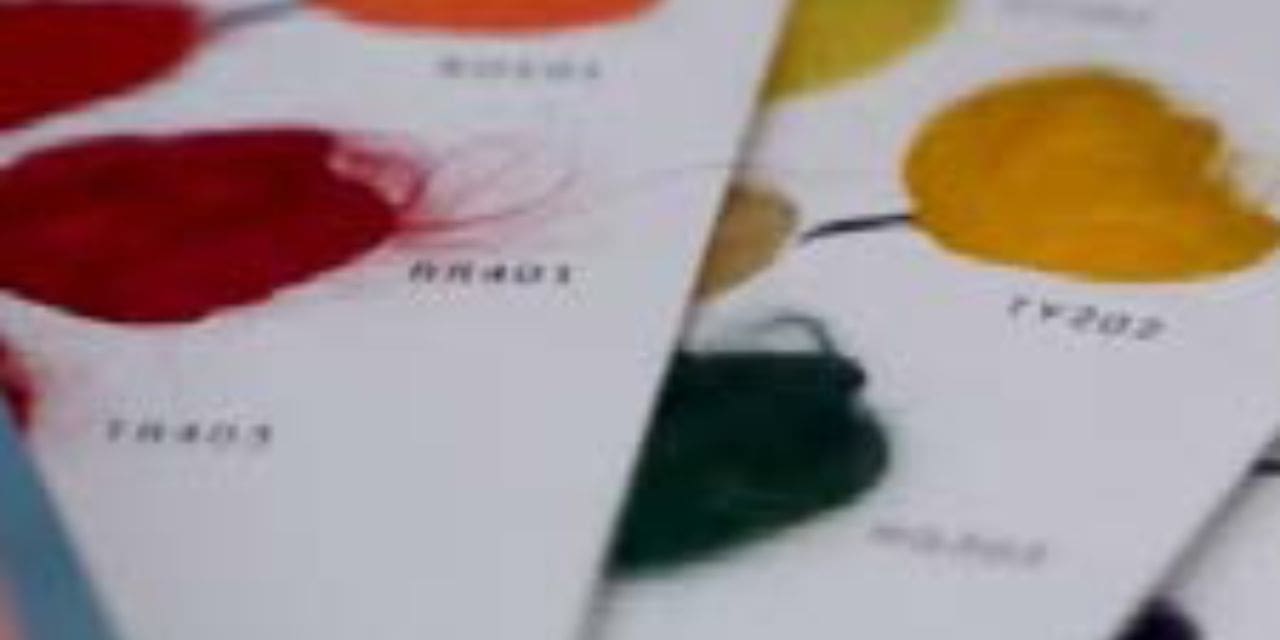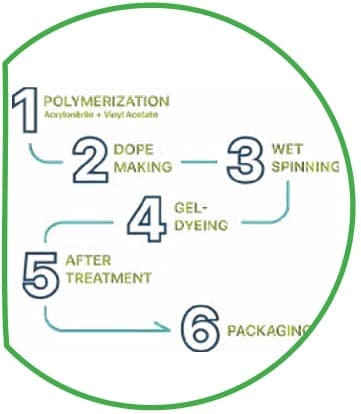Dr. N.N. MAHAPATRA
Business Head (Dyes)
Shree Pushkar Chemicals & Fertilisers Ltd. (301-302, Atlanta Center, Near Udyog Bhawan, Sonawala Road, Goregaon (East )
Mumbai 400063. India
Dyeing of textile fibres and yarns is an area of concern, owing to the issues of pollution and environmental impact by these processes. Strict legislations have been put in place in all countries in this regard. Radianza fibres are made by a technology, where the dyes are added to the fibre while it is in gel stage. The environmental impact of this product is much less compared to a standard yarn dyeing process. Use of Radianza fibre leads to about 20% less water requirement. Additionally, there is no extra requirement for energy and there is negligible loss of dyestuff to the environment. This makes this a Green fibre – a fiber for the future.

Textile manufacturer Thai Acrylic Fibre (TAF) has partnered with Canadian blockchain specialist Licof to trace its flagship Radianza acrylic fibre. The material, produced using a gel-dyeing technology, earlier this year received its impact scores from Higg’s Material Sustainability Index (MSI), which found Radianza to have significantly less of an impact on the environment than other acrylics on the market.
Now that the customers are developing end-products with Radianza with a better sustainability index, it is the right time for introducing the digital platform to trace the fibre easily through the value chain.
Radianza™ is one of the most environment friendly and sustainable fibres made by Gel-Dyeing technology. The Gel dyeing enables Radianza™ to consume much less resources and zero discharge of unused dyes as against the conventional yarn or fabric dyeing process.
What is “Gel-Dyeing” technology?
Just after the spinning of polymer, the fibre obtained from the spinneret is highly amorphous and porous. It is neither completely solid nor completely liquid; it is in a gel-state. When the acrylic dye (basic dyes) solution is added in this stage, it gets immediately absorbed into the fibre without the need for additional water, chemicals or energy. Yarns or fabrics made with 100% Radianza™ fibre need not be dyed again, so the step of yarn dyeing or fabric dyeing, which is a source of high pollution and resource consumption, could be avoided.
Radianza™ Production Process

The Radianza™ acrylic fibre uses gel-dyeing process. This is different from dope dyeing. In gel-dyeing cationic dyes are used to dye the fibre and the fibre is dyed after it is extruded from the spinneret. The concept of gel-dyeing is that just after spinning, the fibre is in a gel-like state (neither completely solid nor completely liquid), and that is when cationic dye is applied. In this state, the fibre has lots of voids in the structure, there- fore when the fibre is passed through dye solution it completely sucks the dye immediately.
Radianza™ Fibre is available in a range of deniers and cut lengths like:
Deniers -1.2, 1.5, 2.5, 3.0
Cut length -38, 51, 64
Forms – Staple fibre, Tow, Tops
PROPERTIES OF RADIANZA FIBRE
It provides the feel and look closely resembling wool, but at the same time is lighter, more durable, and has more vibrant colours.
Till date there are close to 500 shades of Radianza™ produced. Not only one of the most vibrant coloured fibres available today, Radianza™ has superb colour fastness to light, washing and rubbing.
Life Cycle Analysis of Radianza™ shows that, using Ra- dianza™ instead of regular fibre to produce one sweat- er, saves 30 litres of water, needs 25MJ less energy, and creates 1.45 kg less CO₂ emission.
Thai Acrylic Fiber Co. (TAF), of the Aditya Birla Group, has released details of a life-cycle assessment (LCA) relating to its newly-rebranded gel-dyed Radianza fibre as it looks to highlight the water, energy and chemical savings offered through its use.
The new identity encompasses changes to its brand logo – made up of blue and green colours to highlight the aforementioned water savings and subsequent preservation of nature – that are said to better reflect its ambition of gaining recognition as a sustainable solution.
Further evidence of this is provided in an LCA, the results of which highlight that Radianza fibre has 20 times less Global Warming Potential and seven times less Blue Water consumption than acrylic and 30 litres less water consumption.
USES OF RADIANZA FIBRE
- It is commonly used in sweaters, pullovers, and winter accessories g., beanies, socks, scarves gloves, etc. In addition to flat-knits, Radianza™ goes into inner- wear, base layers, and casual wear. Blending Radianza™ with other fibres, or many shades of Radianza™ together in one yarn can give fancy and mélange effects without the need of dyeing, thus saving natural resources in production process. Another application of Radianza™ is into hand-knitting yarns. In addition to the various fancy effects, consumers can be assured of getting shades of their choice even at long gaps be- tween buying.
- It could make shirt and trouser collections vibrant and attractive. Stretch fabrics made with Radianza™ make your trousers and chinos highly comfortable to Mixing different shades of Radianza™ in one yarn or blending Radianza™ with other fibres gives very interesting mélange effect to your fabrics.
- Radianza™, when used in the weft in denim fabrics, will add a colourful appeal to the jeans or den- im jackets. Especially with the new trend of coloured jeans, colourful effects can be achieved and will be visible once folded. Radianza™ also provides denim look when mixed with white or undyed fibres. These denim-look garments have excellent colour fastness and hand feel and are very comfortable to
- It provides excellent colour fastness and a wide choice of shades for home textiles like carpets, cur- tains and upholstery fabrics.

